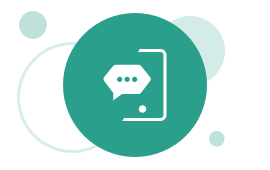Chatbots are on the rise. By 2020, over 80% of businesses are expected to implement some type of chatbot automation (Business Insider, 2016). This type of automation is inevitable due to the amount of time and money that chatbots can save a business. However, especially in the early days of the chatbot revolution, a bot will not be able to solve all the problems that a human can. One specific use case for chatbots that we have examined is customer support. Customer support bots can reduce the workload of support staff by a great deal, but some customers will not find the support they need with a bot. Wouldn’t it be great if a customer could seamlessly go from talking to a bot to a live person in the same interface? That is exactly what we created at Fishbowl with our chatbot and Zendesk integration that you can see in this video.
Starting a conversation with this bot begins using Oracle’s chatbot framework, a feature of Oracle Mobile Cloud Service, much like the rest of our bots. It has the capability do all the integrations that our other chatbots have with systems such as Salesforce, Oracle Engagement Cloud, and Zendesk Software and Support ticketing system. However, this chatbot has the ability to connect to the Zendesk live chat service for more personal support from a live agent. Using the bot, information is collected to be passed to the live agent, so that the live agent can know what was already asked and can waste no time in helping the customer.
To move from a bot conversation to a live chat conversation and back again, customizations had to be made to our web client. Since the live chat feature in Oracle’s bot framework is still a work in progress, the best solution was to stop sending messages to the bot after the user goes through the “connect to a live agent” chat flow. Instead, the web client sends messages directly to Zendesk and receives them in turn. Once the conversation has concluded, the bot returns to normal and talks to the bot framework once again.
Customer service is a critical component of the overall customer experience, and getting customers answers to common questions can go a long way to ensure brand loyalty. Some stats suggest that 80% of routine questions can be answered by a chatbot, but when an agent is needed it is important to provide a seamless handoff while providing the agent with context to immediately begin servicing the customer. If integrated correctly, chatbots and customer service/support representatives (agents) can together improve the customer service experience.
You can see more of the intelligent chatbots Fishbowl has created using Oracle Mobile Cloud here.

